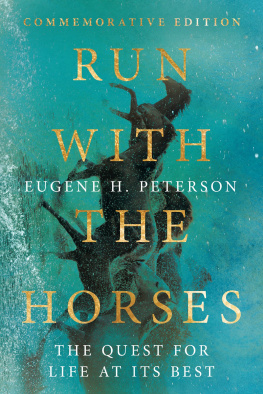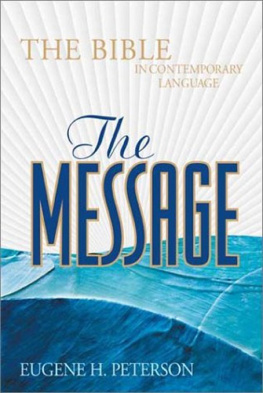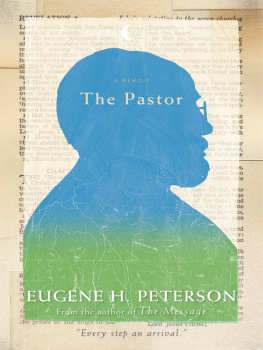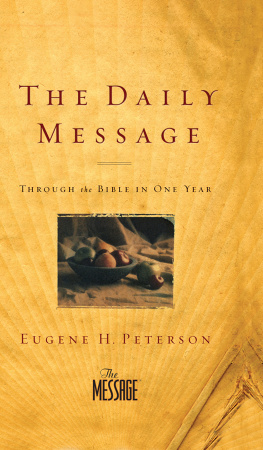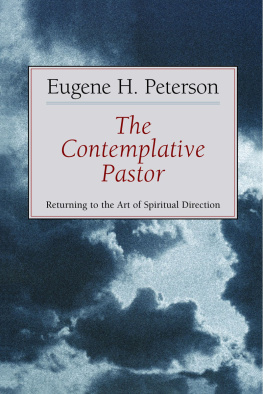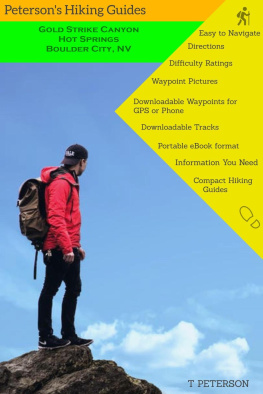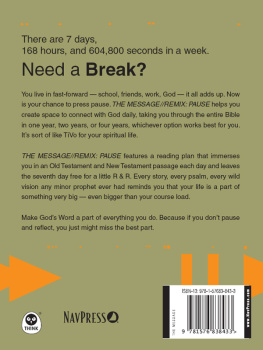A Long Obedience
An Epilogue
When I wrote A Long Obedience twenty years ago, I was a parish pastor writing for my parishioners, the people I knew best in the place I knew best, a few acres of Maryland piedmont on which we were camped for a few years in our wanderings through the North American wilderness. I was doing what pastors dotrying to get this gospel of Jesus Christ into the lives of these men and women with whom I was living, and doing it the only way I knew, through Scripture and prayer, prayer and Scripture. I preached and taught the Scriptures that revealed Jesus. I prayed with and for this mixed bag of saints and sinners that was my congregation, prayed in the name of Jesus.
Two convictions undergirded my pastoral work. The first conviction was that everything in the gospel is livable and that my pastoral task was to get it lived. It was not enough that I announce the gospel, explain it or whip up enthusiasm for it. I wanted it livedlived in detail, lived on the streets and on the job, lived in the bedrooms and kitchens, lived through cancer and divorce, lived with children and in marriage. Along the way I found that this also meant living it myself, which turned out to be a far more formidable assignment. I realized that this was going to take some time. I settled in for the long haul. Thats when the phrase (from Nietzsche) a long obedience in the same direction embedded itself in my imagination and eventually became this book.
The second conviction was that my primary pastoral work had to do with Scripture and prayer. I was neither capable nor competent to form Christ in another person, to shape a life of discipleship in man, woman or child. That is supernatural work, and I am not supernatural. Mine was the more modest work of Scripture and prayerhelping people listen to God speak to them from the Scriptures and then joining them in answering God as personally and honestly as we could in lives of prayer. This turned out to be slow work. From time to time, impatient with the slowness, I would try out ways of going about my work that promised quicker results. But after a while it always seemed to be more like meddling in these peoples lives than helping them attend to God.
More often than not I found myself getting in the way of what the Holy Spirit had been doing long before I arrived on the scene, so I would go back, feeling a bit chastised, to my proper work: Scripture and prayer; prayer and Scripture. But the and is misleading. Scripture and prayer are not two separate entities. My pastoral work was to fuse them into a single act: scriptureprayer, or prayerscripture. It is this fusion of God speaking to us (Scripture) and our speaking to him (prayer) that the Holy Spirit uses to form the life of Christ in us. And it is this fusion that I was trying to get onto the pages of A Long Obedience.
Seventeen publishers rejected it. There was no niche in the market, I was told; I was advised that it was irrelevant to the concerns of contemporary North Americans. And then InterVarsity accepted it for publication. The risk InterVarsity took gave me a foothold and confidence to continue. And I have continued. Twenty years and twenty-eight books later I continue to write out of this same fusion of Scripture and prayer, wanting to give witness and encouragement to the men and women, both laypersons and pastors, who set out to follow Christ.
A few years after writing A Long Obedience I noticed that a lot of people were talking and writing about spirituality. I thought I knew what they were doing and was delighted that so many allies were showing up in unexpected places. But it turned out that I was wrong. I had read my own convictions into their interests. I thought they were interested in living the life of Christ firsthand; I thought they were interested in Scripture and prayer, the most accessible means provided to us for cultivating that life and maturing in it. By and large they were not. The torrent of spiritualities that continues both within and without Christian communities, apparently without letup, has little liking for either long or slow.
Because A Long Obedience was my initial venture into what has continued to characterize everything Ive written since, this fresh edition seems an apt occasion for making explicit what is everywhere implicit in my books; that men and women who believingly follow Jesus (what we commonly call the Christian life or Christian spirituality) are best guided and energized by a fusion of Scripture and prayer. For as long as an enthusiasm for Christian spirituality accelerates without an equivalent commitment to its means, nothing much is going to come of it. There is virtual unanimity among our Christian ancestors that the means consists precisely in this fusion of Scripture and prayer. It is not a terribly difficult way of reading and writing, but it does require diligent attentiveness. The fusion is accomplished by reading these Scriptures slowly, imaginatively, prayerfully and obediently.
This is the way the Bible has been read by most Christians for most of the Christian centuries, but it is not commonly read that way today. The reading style employed more often than not by contemporary Christians is fast, reductive, information-gathering and, above all, practical. We read for what we can get out of it, what we can put to use, what we think we can useand right now. We... we... we... we... all the way home.
If we are serious about following Jesus and living out the gift of his life in detail in our bodies and circumstances, we must swim against this whitewater River We and familiarize ourselves with the world in which Jesus and his gift of life are revealed to us. We do it by reading our Scriptures slowly, imaginatively, prayerfully and obediently. Each adverb is important.
Slowly. The Bible provides the revelation of a world that has primarily to do with God. It is a huge world, far larger than what we inhabit on our own. We live in sin-cramped conditions, mostly conscious of ourselvesour feelings and frustrations, our desires and ideas, our achievements and discoveries, our failures and hurts. The Bible is deep and wide with Gods love and grace, brimming over with surprises of mercy and mystery, peppered with alarming exposs of sin and bulletins of judgment. This is an immense world, and it takes time to adjust to the majestywere not used to anything on this scale. Weve grown up on the streets and back alleys of Lilliputit takes a while for our eyes to adjust. If we move into the Scriptures too fast or move through them too fast, well miss most of what is here.
Imaginatively. The Bible includes us, always. Our lives are implicitly involved in everything said and done in this book. In order to realize this we must enter the story imaginatively. We must let our conversations and experiences and thoughts be brought into the story so that we can observe what happens to us in this new context, through this story line, rubbing shoulders with these characters.
We have picked up the bad habit of reducing what we find in the Bible to ideas or slogans or principles or out-of-context verses. Forget the details; skip the mystery; we want a definition we can grasp and be comfortable with. We depersonalize the Bible into abstractions or truths that we can reconfigure and then fit into the plots that we make up for our lives. But the Bible shows us God present and active in and among living, breathing human beings, the same kind and sort of men and women that we are. Imagination is the capacity we have of crossing boundaries of space and time, with all our senses intact, and entering into other God-revealed conversations and actions, finding ourselves at home in Bible country.
Prayerfully. We are taught to read in order to gather information. Our schools train us to read books so that we can pass examinations. Were good at looking for facts. Knowledge is power, they tell us. Books contain stuff that we can use to get a degree, fix an engine, hold down a job, solve a mystery. But the Bible is not primarily a source of information; it is one of the primary ways that God uses to



